#ELECTRIC VEHICLES
Text
Oh my gosh, YOU GUYS!
There is an EV charging station in Thousand Oaks, California (in the US) where the chargers are named after the boys in TLK!!
To quote my friend: “With Sihtric powering me, I’ll be home before midnight!”
(Sorry for the terrible picture quality, but it was dark and stuff. There’s also a Brida, apparently. And a Thyra! But no Finan. And she checked. Twice. But there’s an Arnas, so we know who was the favorite there!)

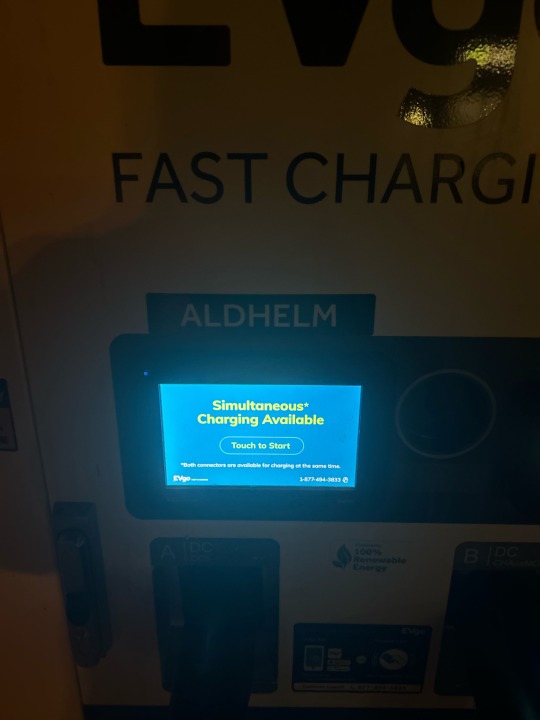



41 notes
·
View notes
Text

my latest cartoon for New Scientist.
66K notes
·
View notes
Text
Tesla's Dieselgate

Elon Musk lies a lot. He lies about being a “utopian socialist.” He lies about being a “free speech absolutist.” He lies about which companies he founded:
https://www.businessinsider.com/tesla-cofounder-martin-eberhard-interview-history-elon-musk-ev-market-2023-2
He lies about being the “chief engineer” of those companies:
https://www.quora.com/Was-Elon-Musk-the-actual-engineer-behind-SpaceX-and-Tesla
He lies about really stupid stuff, like claiming that comsats that share the same spectrum will deliver steady broadband speeds as they add more users who each get a narrower slice of that spectrum:
https://www.eff.org/wp/case-fiber-home-today-why-fiber-superior-medium-21st-century-broadband
The fundamental laws of physics don’t care about this bullshit, but people do. The comsat lie convinced a bunch of people that pulling fiber to all our homes is literally impossible — as though the electrical and phone lines that come to our homes now were installed by an ancient, lost civilization. Pulling new cabling isn’t a mysterious art, like embalming pharaohs. We do it all the time. One of the poorest places in America installed universal fiber with a mule named “Ole Bub”:
https://www.newyorker.com/tech/annals-of-technology/the-one-traffic-light-town-with-some-of-the-fastest-internet-in-the-us
Previous tech barons had “reality distortion fields,” but Musk just blithely contradicts himself and pretends he isn’t doing so, like a budget Steve Jobs. There’s an entire site devoted to cataloging Musk’s public lies:
https://elonmusk.today/
But while Musk lacks the charm of earlier Silicon Valley grifters, he’s much better than they ever were at running a long con. For years, he’s been promising “full self driving…next year.”
https://pluralistic.net/2022/10/09/herbies-revenge/#100-billion-here-100-billion-there-pretty-soon-youre-talking-real-money
He’s hasn’t delivered, but he keeps claiming he has, making Teslas some of the deadliest cars on the road:
https://www.washingtonpost.com/technology/2023/06/10/tesla-autopilot-crashes-elon-musk/
Tesla is a giant shell-game masquerading as a car company. The important thing about Tesla isn’t its cars, it’s Tesla’s business arrangement, the Tesla-Financial Complex:
https://pluralistic.net/2021/11/24/no-puedo-pagar-no-pagara/#Rat
Once you start unpacking Tesla’s balance sheets, you start to realize how much the company depends on government subsidies and tax-breaks, combined with selling carbon credits that make huge, planet-destroying SUVs possible, under the pretense that this is somehow good for the environment:
https://pluralistic.net/2021/04/14/for-sale-green-indulgences/#killer-analogy
But even with all those financial shenanigans, Tesla’s got an absurdly high valuation, soaring at times to 1600x its profitability:
https://pluralistic.net/2021/01/15/hoover-calling/#intangibles
That valuation represents a bet on Tesla’s ability to extract ever-higher rents from its customers. Take Tesla’s batteries: you pay for the battery when you buy your car, but you don’t own that battery. You have to rent the right to use its full capacity, with Tesla reserving the right to reduce how far you go on a charge based on your willingness to pay:
https://memex.craphound.com/2017/09/10/teslas-demon-haunted-cars-in-irmas-path-get-a-temporary-battery-life-boost/
That’s just one of the many rent-a-features that Tesla drivers have to shell out for. You don’t own your car at all: when you sell it as a used vehicle, Tesla strips out these features you paid for and makes the next driver pay again, reducing the value of your used car and transfering it to Tesla’s shareholders:
https://www.theverge.com/2020/2/6/21127243/tesla-model-s-autopilot-disabled-remotely-used-car-update
To maintain this rent-extraction racket, Tesla uses DRM that makes it a felony to alter your own car’s software without Tesla’s permission. This is the root of all autoenshittification:
https://pluralistic.net/2023/07/24/rent-to-pwn/#kitt-is-a-demon
This is technofeudalism. Whereas capitalists seek profits (income from selling things), feudalists seek rents (income from owning the things other people use). If Telsa were a capitalist enterprise, then entrepreneurs could enter the market and sell mods that let you unlock the functionality in your own car:
https://pluralistic.net/2020/06/11/1-in-3/#boost-50
But because Tesla is a feudal enterprise, capitalists must first secure permission from the fief, Elon Musk, who decides which companies are allowed to compete with him, and how.
Once a company owns the right to decide which software you can run, there’s no limit to the ways it can extract rent from you. Blocking you from changing your device’s software lets a company run overt scams on you. For example, they can block you from getting your car independently repaired with third-party parts.
But they can also screw you in sneaky ways. Once a device has DRM on it, Section 1201 of the DMCA makes it a felony to bypass that DRM, even for legitimate purposes. That means that your DRM-locked device can spy on you, and because no one is allowed to explore how that surveillance works, the manufacturer can be incredibly sloppy with all the personal info they gather:
https://www.cnbc.com/2019/03/29/tesla-model-3-keeps-data-like-crash-videos-location-phone-contacts.html
All kinds of hidden anti-features can lurk in your DRM-locked car, protected from discovery, analysis and criticism by the illegality of bypassing the DRM. For example, Teslas have a hidden feature that lets them lock out their owners and summon a repo man to drive them away if you have a dispute about a late payment:
https://tiremeetsroad.com/2021/03/18/tesla-allegedly-remotely-unlocks-model-3-owners-car-uses-smart-summon-to-help-repo-agent/
DRM is a gun on the mantlepiece in Act I, and by Act III, it goes off, revealing some kind of ugly and often dangerous scam. Remember Dieselgate? Volkswagen created a line of demon-haunted cars: if they thought they were being scrutinized (by regulators measuring their emissions), they switched into a mode that traded performance for low emissions. But when they believed themselves to be unobserved, they reversed this, emitting deadly levels of NOX but delivering superior mileage.
The conversion of the VW diesel fleet into mobile gas-chambers wouldn’t have been possible without DRM. DRM adds a layer of serious criminal jeopardy to anyone attempting to reverse-engineer and study any device, from a phone to a car. DRM let Apple claim to be a champion of its users’ privacy even as it spied on them from asshole to appetite:
https://pluralistic.net/2022/11/14/luxury-surveillance/#liar-liar
Now, Tesla is having its own Dieselgate scandal. A stunning investigation by Steve Stecklow and Norihiko Shirouzu for Reuters reveals how Tesla was able to create its own demon-haunted car, which systematically deceived drivers about its driving range, and the increasingly desperate measures the company turned to as customers discovered the ruse:
https://www.reuters.com/investigates/special-report/tesla-batteries-range/
The root of the deception is very simple: Tesla mis-sells its cars by falsely claiming ranges that those cars can’t attain. Every person who ever bought a Tesla was defrauded.
But this fraud would be easy to detect. If you bought a Tesla rated for 353 miles on a charge, but the dashboard range predictor told you that your fully charged car could only go 150 miles, you’d immediately figure something was up. So your Telsa tells another lie: the range predictor tells you that you can go 353 miles.
But again, if the car continued to tell you it has 203 miles of range when it was about to run out of charge, you’d figure something was up pretty quick — like, the first time your car ran out of battery while the dashboard cheerily informed you that you had 203 miles of range left.
So Teslas tell a third lie: when the battery charge reached about 50%, the fake range is replaced with the real one. That way, drivers aren’t getting mass-stranded by the roadside, and the scam can continue.
But there’s a new problem: drivers whose cars are rated for 353 miles but can’t go anything like that far on a full charge naturally assume that something is wrong with their cars, so they start calling Tesla service and asking to have the car checked over.
This creates a problem for Tesla: those service calls can cost the company $1,000, and of course, there’s nothing wrong with the car. It’s performing exactly as designed. So Tesla created its boldest fraud yet: a boiler-room full of anti-salespeople charged with convincing people that their cars weren’t broken.
This new unit — the “diversion team” — was headquartered in a Nevada satellite office, which was equipped with a metal xylophone that would be rung in triumph every time a Tesla owner was successfully conned into thinking that their car wasn’t defrauding them.
When a Tesla owner called this boiler room, the diverter would run remote diagnostics on their car, then pronounce it fine, and chide the driver for having energy-hungry driving habits (shades of Steve Jobs’s “You’re holding it wrong”):
https://www.wired.com/2010/06/iphone-4-holding-it-wrong/
The drivers who called the Diversion Team weren’t just lied to, they were also punished. The Tesla app was silently altered so that anyone who filed a complaint about their car’s range was no longer able to book a service appointment for any reason. If their car malfunctioned, they’d have to request a callback, which could take several days.
Meanwhile, the diverters on the diversion team were instructed not to inform drivers if the remote diagnostics they performed detected any other defects in the cars.
The diversion team had a 750 complaint/week quota: to juke this stat, diverters would close the case for any driver who failed to answer the phone when they were eventually called back. The center received 2,000+ calls every week. Diverters were ordered to keep calls to five minutes or less.
Eventually, diverters were ordered to cease performing any remote diagnostics on drivers’ cars: a source told Reuters that “Thousands of customers were told there is nothing wrong with their car” without any diagnostics being performed.
Predicting EV range is an inexact science as many factors can affect battery life, notably whether a journey is uphill or downhill. Every EV automaker has to come up with a figure that represents some kind of best guess under a mix of conditions. But while other manufacturers err on the side of caution, Tesla has the most inaccurate mileage estimates in the industry, double the industry average.
Other countries’ regulators have taken note. In Korea, Tesla was fined millions and Elon Musk was personally required to state that he had deceived Tesla buyers. The Korean regulator found that the true range of Teslas under normal winter conditions was less than half of the claimed range.
Now, many companies have been run by malignant narcissists who lied compulsively — think of Thomas Edison, archnemesis of Nikola Tesla himself. The difference here isn’t merely that Musk is a deeply unfit monster of a human being — but rather, that DRM allows him to defraud his customers behind a state-enforced opaque veil. The digital computers at the heart of a Tesla aren’t just demons haunting the car, changing its performance based on whether it believes it is being observed — they also allow Musk to invoke the power of the US government to felonize anyone who tries to peer into the black box where he commits his frauds.

If you'd like an essay-formatted version of this post to read or share, here's a link to it on pluralistic.net, my surveillance-free, ad-free, tracker-free blog:
https://pluralistic.net/2023/07/28/edison-not-tesla/#demon-haunted-world

This Sunday (July 30) at 1530h, I’m appearing on a panel at Midsummer Scream in Long Beach, CA, to discuss the wonderful, award-winning “Ghost Post” Haunted Mansion project I worked on for Disney Imagineering.

Image ID [A scene out of an 11th century tome on demon-summoning called 'Compendium rarissimum totius Artis Magicae sistematisatae per celeberrimos Artis hujus Magistros. Anno 1057. Noli me tangere.' It depicts a demon tormenting two unlucky would-be demon-summoners who have dug up a grave in a graveyard. One summoner is held aloft by his hair, screaming; the other screams from inside the grave he is digging up. The scene has been altered to remove the demon's prominent, urinating penis, to add in a Tesla supercharger, and a red Tesla Model S nosing into the scene.]

Image:
Steve Jurvetson (modified)
https://commons.wikimedia.org/wiki/File:Tesla_Model_S_Indoors.jpg
CC BY 2.0
https://creativecommons.org/licenses/by/2.0/deed.en
#pluralistic#steve stecklow#autoenshittification#norihiko shirouzu#reuters#you're holding it wrong#r2r#right to repair#range rage#range anxiety#grifters#demon-haunted world#drm#tpms#1201#dmca 1201#tesla#evs#electric vehicles#ftc act section 5#unfair and deceptive practices#automotive#enshittification#elon musk
8K notes
·
View notes
Text
Good News - July 22-28
Like these weekly compilations? Tip me at $kaybarr1735 or check out my new(ly repurposed) Patreon!
1. Four new cheetah cubs born in Saudi Arabia after 40 years of extinction

“[T]he discovery of mummified cheetahs in caves […] which ranged in age from 4,000 to as recent as 120 years, proved that the animals […] once called [Saudi Arabia] home. The realisation kick-started the country’s Cheetah Conservation Program to bring back the cats to their historic Arabian range. […] Dr Mohammed Qurban, CEO of the NCW, said: […] “This motivates us to continue our efforts to restore and reintroduce cheetahs, guided by an integrated strategy designed in accordance with best international practices.””
2. In sub-Saharan Africa, ‘forgotten’ foods could boost climate resilience, nutrition

“[A study published in PNAS] examined “forgotten” crops that may help make sub-Saharan food systems more resilient, and more nutritious, as climate change makes it harder to grow [current staple crops.] [… The study identified 138 indigenous] food crops that were “relatively underresearched, underutilized, or underpromoted in an African context,” but which have the nutrient content and growing stability to support healthy diets and local economies in the region. […] In Eswatini, van Zonneveld and the World Vegetable Center are working with schools to introduce hardy, underutilized vegetables to their gardens, which have typically only grown beans and maize.”
3. Here's how $4 billion in government money is being spent to reduce climate pollution

“[New Orleans was awarded] nearly $50 million to help pay for installing solar on low to middle income homes [… and] plans to green up underserved areas with trees and build out its lackluster bike lane system to provide an alternative to cars. […] In Utah, $75 million will fund several measures from expanding electric vehicles to reducing methane emissions from oil and gas production. [… A] coalition of states led by North Carolina will look to store carbon in lands used for agriculture as well as natural places like wetlands, with more than $400 million. [… This funding is] “providing investments in communities, new jobs, cost savings for everyday Americans, improved air quality, … better health outcomes.””
4. From doom scrolling to hope scrolling: this week’s big Democratic vibe shift

“[Democrats] have been on an emotional rollercoaster for the past few weeks: from grim determination as Biden fought to hang on to his push for a second term, to outright exuberance after he stepped aside and Harris launched her campaign. […] In less than a week, the Harris campaign raised record-breaking sums and signed up more than 100,000 new volunteers[….] This honeymoon phase will end, said Democratic strategist Guy Cecil, warning the election will be a close race, despite this newfound exuberance in his party. [… But v]oters are saying they are excited to vote for Harris and not just against Trump. That’s new.”
5. Biodegradable luminescent polymers show promise for reducing electronic waste

“[A team of scientists discovered that a certain] chemical enables the recycling of [luminescent polymers] while maintaining high light-emitting functions. […] At the end of life, this new polymer can be degraded under either mild acidic conditions (near the pH of stomach acid) or relatively low heat treatment (> 410 F). The resulting materials can be isolated and remade into new materials for future applications. […] The researchers predict this new polymer can be applied to existing technologies, such as displays and medical imaging, and enable new applications […] such as cell phones and computer screens with continued testing.”
6. World’s Biggest Dam Removal Project to Open 420 Miles of Salmon Habitat this Fall

“Reconnecting the river will help salmon and steelhead populations survive a warming climate and [natural disasters….] In the long term, dam removal will significantly improve water quality in the Klamath. “Algae problems in the reservoirs behind the dams were so bad that the water was dangerous for contact […] and not drinkable,” says Fluvial Geomorphologist Brian Cluer. [… The project] will begin to reverse decades of habitat degradation, allow threatened salmon species to be resilient in the face of climate change, and restore tribal connections to their traditional food source.”
7. Biden-Harris Administration Awards $45.1 Million to Expand Mental Health and Substance Use Services Across the Lifespan
““Be it fostering wellness in young people, caring for the unhoused, facilitating treatment and more, this funding directly supports the needs of our neighbors,” said HHS Secretary Xavier Becerra. [The funding also supports] recovery and reentry services to adults in the criminal justice system who have a substance use disorder[… and clinics which] serve anyone who asks for help for mental health or substance use, regardless of their ability to pay.”
8. The World’s Rarest Crow Will Soon Fly Free on Maui

“[… In] the latest attempt to establish a wild crow population, biologists will investigate if this species can thrive on Maui, an island where it may have never lived before. Translocations outside of a species’ known historical range are rare in conservation work, but for a bird on the brink of extinction, it’s a necessary experiment: Scientists believe the crows will be safer from predators in a new locale—a main reason that past reintroduction attempts failed. […] As the release date approaches, the crows have already undergone extensive preparation for life in the wild. […] “We try to give them the respect that you would give if you were caring for someone’s elder.””
9. An optimist’s guide to the EV battery mining challenge
““Battery minerals have a tremendous benefit over oil, and that’s that you can reuse them.” [… T]he report’s authors found there’s evidence to suggest that [improvements in technology] and recycling have already helped limit demand for battery minerals in spite of this rapid growth — and that further improvements can reduce it even more. [… They] envision a scenario in which new mining for battery materials can basically stop by 2050, as battery recycling meets demand. In this fully realized circular battery economy, the world must extract a total of 125 million tons of battery minerals — a sum that, while hefty, is actually 17 times smaller than the oil currently harvested every year to fuel road transport.”
10. Peekaboo! A baby tree kangaroo debuts at the Bronx Zoo

“The tiny Matschie’s tree kangaroo […] was the third of its kind born at the Bronx Zoo since 2008. [… A] Bronx Zoo spokesperson said that the kangaroo's birth was significant for the network of zoos that aims to preserve genetic diversity among endangered animals. "It's a small population and because of that births are not very common," said Jessica Moody, curator of primates and small mammals at the Bronx Zoo[, …] adding that baby tree kangaroos are “possibly one of the cutest animals to have ever lived. They look like stuffed animals, it's amazing.””
July 15-21 news here | (all credit for images and written material can be found at the source linked; I don’t claim credit for anything but curating.)
#hopepunk#good news#cheetah#extinct species#africa#nutrition#food#farming#gardening#pollution#climate#climate change#climate crisis#democrats#us politics#us elections#kamala harris#voting#recycling#biodegradable#technology#salmon#habitat#fish#mental illness#mental health#substance abuse#hawaii#electric vehicles#zoo
819 notes
·
View notes
Text
Things Biden and the Democrats did, this week #15
April 19-26 2024
President Biden appeared along side Congresswoman Alexandria Ocasio-Cortez and Senators Ed Markey and Bernie Sanders to announce major climate action. Biden announced a program, Solar For All, 7 billion dollars aimed at supporting low income house holds install solar power in their homes. The program will support 900,000 households across the country getting solar. Lower the average energy bill for a family by $400 a month and avoid more than 30 million metric tons of carbon pollution over the next 25 years. The boost in solar installation will help create 200,000 new jobs across the country. The President also announced the launch of the Climate Conservation Crops. modeled on FDR's Civilian Civilian Conservation Corps and JFK's Peace Corps, Biden's Climate Conservation Crops will be a program where young people can connect with climate projects across the country and be paid to help protect the planet. The Corps will be 20,000 strong, with 2,000 openings listed right now on their webpage across 36 states DC and Puerto Rico.
The Department of Labor finalized a new rule on overtime. Currently employers are only required to pay overtime to workers making under $35,568. Under the new ruling that will be raised to workers making $43,888, and in January 2025 raised again to workers making $58,656 and under. This will bring overtime pay to 4 million more workers and transfer $1.5 billion from the pockets of companies to workers. It also fixes to raise the level with inflation every 3 years starting in 2027.
The EPA announced a $1 billion dollar program to help replace heavily duty vehicles with clean energy versions. There are currently 3 million class 6 and 7 vehicles, school buses, box trucks dump trucks, street sweepers, delivery trucks, bucket trucks, and utility trucks, in use. 70% of the funds will go to replacing School Buses with Clean energy buses and the remaining 30% will go to replacing Vocational Vehicles like dump trucks and street sweepers. Heavy Duty vehicles on top of green house cases release harmful nitrogen oxide and fine particulate matter and replacing them will not only combat climate change but improve public health.
The Department of Interior took actions to protect 13 million acres of Alaska wild land is protected and to secure the livelihood of Alaska Native peoples who rely on this land. The Administration refused oil and mining rights on the vast areas of Alaska land as well as a 210 miles road through the northern wildernesses. This area represents valuable habitat for caribou and endangered polar bears, as well as millions of migrating birds.
The Department of Transportation announced finalized rules requiring airlines to give automatic cash refunds for canceled flights and other inconvenience. The refunds will be automatic meaning passengers will not have apply for them, prompt the airlines are required to refund a credit card purchase in 7 days, and require repayment in full and in kind, airlines can not substitute travel vouchers for cash. The DOT also announced new rules to protect airline travelers from junk fees, airlines and ticket agents must now clearly tell travelers upfront about all fees so no one is surprised by a hidden fee.
The EPA announced finalized rules on emissions standards for fuel burning power plants. The new rules include a tightening of Mercury and Air Toxics Standards, requiring a 70% reduction in mercury. It also had rules protecting ground water, new rules will require coal powered plants to remove 660 million pounds per year of pollutants discharged through wastewater, and for the first time federally regulates the dumping of coal ash, requiring safe dump sites that will not leak into ground water. Finalized rules require coal fired and new natural gas-fired power plants to capture up to 90% of their carbon pollution
Security of Transportation Pete Buttigieg attended the ground breaking of a new high speed rail project to connect Los Angeles and Las Vegas. The Biden Administration announced 3 billion to support the project 5 months ago. At 218 of all electric green rail the project promises to be the fastest way to get from LA to Las Vegas. Planned to open in 2028 just in time for the LA Olympics it is the first of many planned high speed rail projects. The Biden Administration has promised $66 billion for high speed rail and the largest single investment in Amtrak ever.
The FCC announced a new rule restoring Net Neutrality. Net Neutrality requires internet service pervaders to treat all websites equally and not slow certain ones now or speed others. In 2015 under Obama the FCC passed a rule requiring Net Neutrality. However in 2017, the FCC spread headed by Trump appointed Chair Ajit Pai repealed the rules. A patchwork of Democratic controlled states, lead by California passed state level laws requiring Net Neutrality forcing ISPs to de facto keep it in place. Late last year President Biden got the opportunity to replace Pai on the FCC, giving the FCC a 3 to 2 Democratic majority which voted this week to return to the Obama era rules and protect Net Neutrality nationwide.
The FTC passed finalized regulations to ban noncompete agreements in nearly all cases. These agreements, which cover 18% of American workers, about 30 million people, prohibit workers from joining or creating competing companies for a certain period of time. The FTC estimates that workers will earn an average of $524 dollars a year more and up to 8,500 new businesses will be created each year. The new rule will still allow noncompete for senior executives who make up less than 1% of the work force. Like with the FCC, two out of the 3 FTC commissioners who voted for the new rules are Biden appointees.
The Departments of Health and Human Services and Interior have announced a joint, $1 billion project to connect tribal communities to safe drinking water. Roughly half of Tribal households lack access to clean drinking water or adequate sanitation.
At the White House The Biden Administration announced plans to protect, restore and reconnect 8 million acres of wetlands and 100,000 miles of rivers and streams. This effort will include state, local and tribal government as well as private efforts along with the federal government to protect and restore the nations freshwater environments.
The Department of Health and Human Services announced a new rule boosting privacy protection for abortions. Republicans in states like Alabama, Texas, Oklahoma and Idaho have tried to make it a crime to leave the state to seek an abortion in a state where it is legal. The new federal rule would make it illegal for health information to be shared in these cases
Vice-President Harris announced a new rule requiring staffing standards at Nursing Homes across the country. The new rules will require registered nurses on duty 24 hours, seven days a week. This represents the first time the Centers for Medicare & Medicaid Services have required specific numbers of nurses and aides in Nursing Homes that get Medicare and Medicaid funding.
The Biden Administration Announced a $6 billion deal with tech giant Micron to bring high tech manufacturing to New York. The deal is expected to see Micron invest $100 billion in Syracuse New York area as well as build a factory in Boise, Idaho. The deal will create 70,000 new jobs. It is part of the Biden Administration's effort to bring high tech chip manufacturing to America.
The Department of Education finalized the most comprehensive federal protections for Trans and other Queer students in the nation's history. The rules also overturn Trump era rules on how colleges should handle sexual assault and harassment.
#Thanks Biden#Joe Biden#climate change#trans rights#abortion rights#overtime#net neutrality#high speed rail#green energy#electric vehicles#busy fucking week#sorry for formatting change#so many things
679 notes
·
View notes
Text
Electric Cars getting transported on an open deck catch on fire after the salt water shorts their batteries. 🤔
#pay attention#educate yourself#educate yourselves#reeducate yourself#knowledge is power#reeducate yourselves#think for yourself#think for yourselves#think about it#do your homework#do your research#do your own research#question everything#ask yourself questions#ask yourself#electric vehicles
3K notes
·
View notes
Text

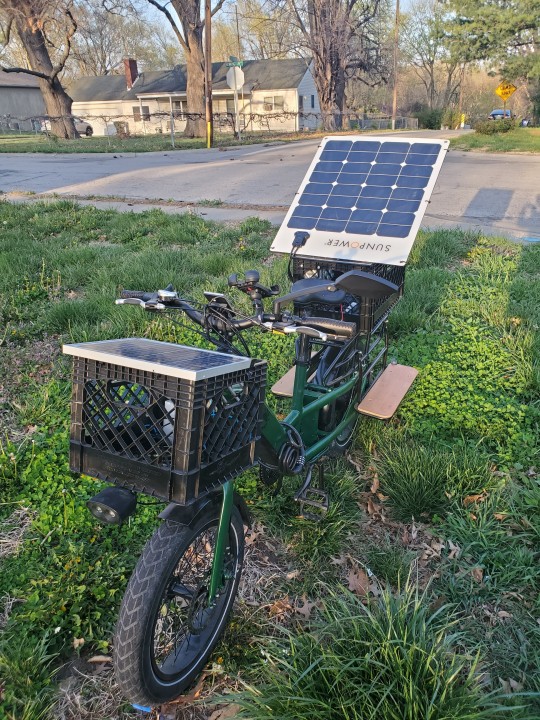
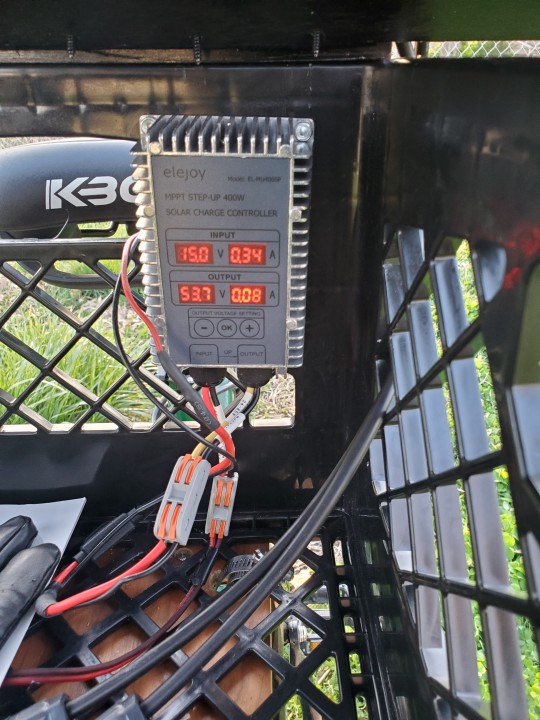


Day 5 or 6 of working on the solar bike. The main bike is effectivaly finished. Decided to go lightweight on everything and it was definantly the way to go. On the back is a 24qt milk crate big enough to hold another few bike batteries. That has a thin as possible sheet of hobby plywood above it that is ziptied to the 50w flexible solar panel. And mounted to the milkcrate with hobby screws. The panel recharges the bike through a mppt step up charge controller. The front panel charges just a simple 5v battery pack for my phone. All in all, I think it turned out well.
296 notes
·
View notes
Text
PETITION TO STOP UNETHICAL COBALT MINING IN CONGO!!
Sign and share with as many people as you can!!!!! Many people, including little kids, are mining in unsafe and unethical conditions in Congo. Sign this petition to stop these horrible conditions and violations of human rights and advocate for boycotting companies that profit from these horrible conditions eg. tech companies, vapes etc!!!!!
#stop terrorism against Congo#democratic republic of the congo#free congo#congo#dr congo#democratic republic of congo#help congo#save congo#human rights#human rights violations#humanitarian aid#disposable vape#vapers#vapelife#vapeshop#vapefam#tesla#teslamotors#teslamodely#teslacars#elonmusk#elon#electric vehicles#iphone#macbook#cellphone#techreview#stop forced labour in Congo#stop human rights violations upon Congolese people#save the children
276 notes
·
View notes
Text
Electric buses and electric trains electric buses and electric train’s electric buses and electric trains eleCTRIC BUSES AND ELECTRIC TRAINS ELECTRIC BUSES AND ELECTRIC TRAINS ELECTRIC BUSES AND ELECTRIC TRAINS ELECTRIC BUSES AND ELECTRIC TRAINS
ELECTRIC BUSES AND ELECTRIC TRAINS!!!!!!!!!!!!!!!!
#solarpunk#public transportation#bus#train#electric buses#electric train#electric vehicles#AND NOT ONLY ARE THEY ELECTRIC BUSES AND ELECTRIC TRAINS#BUT THEY ARE CHARGED THROUGH ELECTRICITY GAINED BY RENEWABLE ENERGY#BUT SERIOUSLY COME ON WE NEED MORE PUBLIC TRANSPORTATION#THAT IS NOT RUN ON FOSSIL FULES#YOU!#YEAH YOU!#GO SEE WHO YOU NEED TO TALK TO IN ORDER TO GET SOME OF THAT IN YOUR CITY#MAYBE CITY HALL
444 notes
·
View notes
Text
"The prospects of the world staying within the 1.5C limit on global heating have brightened owing to the “staggering” growth of renewable energy and green investment in the past two years, the chief of the world’s energy watchdog has said.
Fatih Birol, the executive director of the International Energy Agency, and the world’s foremost energy economist, said much more needed to be done but that the rapid uptake of solar power and electric vehicles were encouraging.
“Despite the scale of the challenges, I feel more optimistic than I felt two years ago,” he said in an interview. “Solar photovoltaic installations and electric vehicle sales are perfectly in line with what we said they should be, to be on track to reach net zero by 2050, and thus stay within 1.5C. Clean energy investments in the last two years have seen a staggering 40% increase.” ...
The IEA, in a report entitled Net Zero Roadmap, published on Tuesday morning, also called on developed countries with 2050 net zero targets, including the UK, to bring them forward by several years.
The report found “almost all countries must move forward their targeted net zero dates”, which for most developed countries are 2050. Some developed countries have earlier dates, such as Germany with 2045 and Austria and Iceland with 2040 and for many developing countries they are much later, 2060 in the case of China and 2070 for India.
Cop28, the UN climate summit to be held in Dubai this November and December, offered a key opportunity for countries to set out tougher emissions-cutting plans, Birol said.
He wants to see Cop28 agree a tripling of renewable energy by 2030, and a 75% cut in methane from the energy sector by the same date. The latter could be achieved at little cost, because high gas prices mean that plugging leaks from oil and gas wells can be profitable...
He also called for Cop28 to agree a doubling of energy efficiency. “To reduce fossil fuel emissions, we need to reduce demand for fossil fuels. This is a golden condition, if we are to reach our climate goals,” he said.
Birol stopped short of endorsing the call that some countries have made for a full phase-out of fossil fuels by 2050 to be agreed at Cop28, but he said all countries must work on reducing their fossil fuel use."
-via The Guardian, September 26, 2023
#climate change#sustainability#climate anxiety#climate and environment#climate crisis#climate news#climate emergency#global warming#environment#climate action#iea#international politics#international energy agency#cop28#united nations#greenhouse gas emissions#fossil fuels#renewable energy#solar power#electric vehicles#ev#solar panels#climate tech#good news#hope#hope posting#hopepunk
424 notes
·
View notes
Photo

Registered Electric Vehicles in USA per 1000 people, 2022.
102 notes
·
View notes
Text

#design#fashion#car#car detailing#car design#cars#classic cars#beauty#beautiful#beautiful car#beautiful cars#classical cars#automotive#automobile#classic automobiles#classic#beautiful automobile#motor#color design#aesthetic#car aesthetic#automobile aesthetic#car fun#unusual vehicles#vehicle wraps#automative#automotive art#automotive accessories#electric vehicles#Nichole aesthetic
111 notes
·
View notes
Text
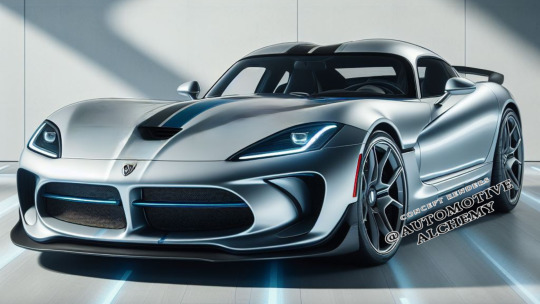
Dodge Viper SRT-E All Electric Supercar Concept
#autos#cars#automotive#coupe#luxury car#sports cars#dodge concept#dodge#muscle car#american muscle car#hemi#classic cars#classic car#dodge viper#electric cars#electronic#electric vehicles#elegant
149 notes
·
View notes
Text

A video of an electric powered truck being recharged by a gasoline powered generator.
Go woke go broke.
291 notes
·
View notes
Text
Good News - May 22-28
Like these weekly compilations? Support me on Ko-fi or $Kaybarr1735! Also, if you tip me on Ko-fi or CashApp (and give me some way to contact you if it doesn’t automatically), at the end of the month I'll send you a link to all of the articles I found but didn't use each week - almost double the content!
1. Scientists Invent Healthier More Sustainable Chocolate
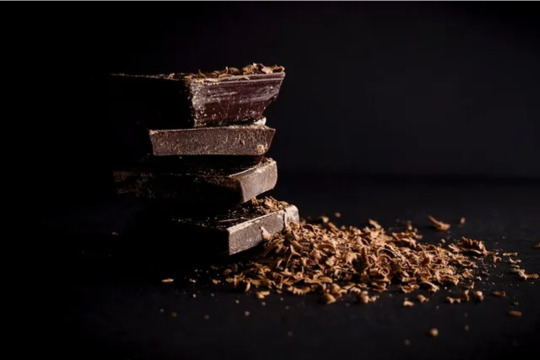
“The new chocolate recipe from researchers at ETH Zurich uses more materials from the cocoa pod that are usually discarded, including more of the pulp as well as the inner lining of the husk, known as the endocarp. […] The resulting chocolate also [was “deliciously sweet” and] had 20% more fibre and 30 percent less saturated fat than average European dark chocolate[, and] it could enable cocoa farmers [to] earn more from their crops.”
2. Vermont Is Coming for Big Oil, Making It Pay for Decades of Climate Pollution

“Legislators in Montpelier are on the brink of enacting the "Climate Superfund Act," modeled after the federal Superfund law, that seeks to make oil, gas and coal companies pay for damages linked to historical greenhouse gas emissions. […] Companies would be held liable for the costs associated with […] floods and heat waves, along with losses to biodiversity, safety, economic development and anything else the treasurer deems reasonable[, that were caused by their emissions].”
3. Important bird habitat now protected in the Rocky Mountain Trench
“Grassland-reliant species in the Rocky Mountain Trench now have more protected habitat thanks to a new [270-hectare] conservation area near Cranbrook. […] About one-third of the Skookumchuck Prairie Conservation Area is forested[…,] Most of the site is a dry grassland[…, and] Three hectares of wetlands add to the landscape diversity and offer crucial benefits to wildlife and water systems in the area. This conservation gem also provides habitat for endangered American badger and excellent winter range for elk, mule deer and white-tailed deer.”
4. Lemur Week marked by 70th breeding success

“A wildlife park has celebrated its 70th lemur breeding success ahead of a week raising money to help save the endangered primates. […] The park's open-air Madagascar exhibit is home to 31 free-roaming lemurs and was officially opened in 2008. […] Females are only sexually receptive for just one or two days a year, leaving a small window of opportunity for males to father offspring. […] The two playful siblings, one female and one male, were born to father Bernard and mother Hira.”
5. Innovative material for sustainable building
“Researchers introduce a polymer-based material with unique properties. This material allows sunlight to enter, maintains a more comfortable indoor climate without additional energy, and cleans itself like a lotus leaf. The new development could replace glass components in walls and roofs in the future.”
6. Isle of Wight eagles don't pose threat to lambs as feared

“While there had previously been fears that the eagles would feed on livestock, such as lambs, the project has found no evidence of this. [… “W]hite-tailed eagles effectively steal meals from other predatory birds[, which is] a really important ecological role that had been lost within the landscape and is being restored.” [… The birds’] population was boosted by a chick last year – the first time the species has bred in England in 240 years.”
7. Breakthrough discovery uses engineered surfaces to shed heat
“Cheng's team has found a way to lower the starting point of the [Leidenfrost] effect by producing a surface covered with micropillars. […] The discovery has great potential in heat transfer applications such as the cooling of industrial machines and surface fouling cleaning for heat exchangers. It also could help prevent damage and even disaster to nuclear machinery.”
8. New malaria vaccine delivered for the first time

“A total of 43,000 doses arrived by air today from UNICEF, and another 120,000 are scheduled to show up in the coming days. […] They're the first vaccines designed to work against a human parasite. […] Across four African countries, these trials showed a 75% reduction in malaria cases in the year following vaccination of young children. […] The Serum Institute of India, who will be manufacturing the new vaccine, says a hundred million doses will likely be available to countries by the middle of next year.”
9. Urban gardening may improve human health: Microbial exposure boosts immune system
“"One month of urban indoor gardening boosted the diversity of bacteria on the skin of the subjects and was associated with higher levels of anti-inflammatory cytokines in the blood. The group studied used a growing medium with high microbial diversity emulating the forest soil," [… whereas] the control group used a microbially poor peat-based medium. [… N]o changes in the blood or the skin microbiota were seen. […] “This is the first time we can demonstrate that meaningful and natural human activity can increase the diversity of the microbiota of healthy adults and, at the same time, contribute to the regulation of the immune system."”
10. Cities Are Switching to Electric Vehicles Faster Than Individuals

“[M]ost large cities have adopted some kind of climate goal, and some of them are buying EVs for their municipal fleets at a faster rate than the general public. And that progress could speed up as more EVs enter the market and as cities get educated about grant funding and tax incentives that were passed over the last four years.”
May 15-21 news here | (all credit for images and written material can be found at the source linked; I don’t claim credit for anything but curating.)
#hopepunk#good news#chocolate#sustainability#farming#health#vermont#big oil#oil companies#climate change#cooling#technology#nuclear#malaria#vaccine#africa#unicef#eagles#livestock#england#birds#electric vehicles#glass#energy efficiency#habitat#conservation#lemur#zoo#gardening#urban gardening
331 notes
·
View notes
Text
A newspaper in my country has interviewed Siddharth Kara, one of the experts on what's going on in the cobalt mines in Congo. I think it's very well explained and a must-read to get an overview of this huge human rights violation that is going on. So here I translate it to English, hoping it will reach more people.
Siddharth Kara: "Every time we buy a new mobile phone, we put our foot around the neck of a child in the Congo"
Interview with the author of Cobalt Red: How the Blood of the Congo Powers Our Lives
"The poorest people in the world, including tens of thousands of children, dig the earth in toxic and very dangerous conditions to find cobalt," says journalist and writer Siddharth Kara (Knoxville, Tennessee, USA, 1974). The rechargeable batteries of our mobile phones, tablets, laptops or electric vehicles need this mineral that thousands of children, men, women and elderly people extract from the Congolese mines in inhumane conditions. Kara went there because he had specialized in research on slavery, and in Congo he found a modernized form of slavery. "Time has passed, but the colonial mentality has not," he explains. Everything he saw there and what was explained to him is recounted in Cobalt Red: How the Blood of the Congo Powers Our Lives (a book that does not have a translation into Catalan, but which has now been translated into Spanish, by Capitán Swing). The photographs and videos illustrating this interview were taken by himself.
—Was it difficult to write this book?
—Yes. Firstly, because of the specific difficulty of this area of the Congo: very dangerous, very militarized. There are armed militias. And for the local people there it is dangerous to talk to foreigners, because it can bring them consequences. It was difficult to get there, and then it was difficult to build trust with the people who worked there. I only managed it thanks to this trust, which we achieved little by little, until we were sure that we could do the research with guarantees and ethically.
—What drove you to the Congo cobalt mines?
—I had been doing research on slavery since 2000. Around 2016, some African colleagues contacted me and said: “Siddharth, something terrible is happening in the cobalt mines of the Congo, maybe you should go there”. I had no idea what cobalt was. I thought it was a color used for painting. I didn't know it was used for rechargeable batteries. It took me a couple of years to grasp its importance. Then I started making contacts to travel there, and in the summer of 2018 I went there.
—And what did you find there?
—The suffering and degradation I saw there were so intense that I decided to return there often to write a book. Hundreds of thousands of the world's poorest people, including tens of thousands of children, dig the earth in toxic and very dangerous conditions to find cobalt and put it into circulation, in a distribution chain that goes to the rechargeable devices and cars that people like you and me use every day. It was a human apocalypse, a total invasion of human rights and the dignity of the Congolese people.
—Could you describe what a mine like this is like, physically? How should we imagine it?
—Those who are at the top of the economic chain of cobalt exploitation like to distort the truth, and use the term "artisanal mine". This way, they evoke a kind of picturesque activity, but on the ground it is a dangerous and degrading job. A mine of this kind is a mass of tunnels, pits and trenches filled with thousands of people who dig with shovels, pieces of metal or directly with their bare hands. They fill a sack with earth, stone and mud. Some children rinse it in toxic pools to separate the mud from the cobalt stones, which a whole family pours into another sack. It might take twelve hours to fill a forty-kilo sack or two. For each sack they get paid a few euros, very few, and that's how they live every day. They survive.
This video was filmed by Siddharth Kara: [you can watch the video in the interview link, freely available without any paywall, here]
—Is there any rational organization in these mines? Is there someone who decides who does what to optimize work?
—Well, there is a whole gear designed so that the poor and the children of the Congo produce hundreds of thousands of tons of cobalt every year. There, work is usually divided by age and gender. Digging tunnels, which requires a lot of strength, is usually done by young men and teenagers. The digging of small pits and trenches that can be less meters deep is done by women and smaller children. Rinsing this toxic cobalt is usually done by the children. The merchant system to exploit these families and sell the cobalt they produce to the formal industrial mines is very well set up.
—What else do these people at the top of the chain invent?
—Another fiction they invent is that there is a difference between industrial and artisanal mining, and that they only buy from the industrial one, where there is no child labor. Not true: all cobalt is mined by children. All the cobalt that the children and peasants extract goes straight to industrial mining. In addition, there is no way to separate what comes from a bulldozer and what comes from a child, once it all pours into the same place in the facility that does the industrial processing before this cobalt is sent out of the Congo.
—You explain that the situation is particularly abusive for women.
—Yes. It is a lawless land, and violence is the norm. Women and girls always bear the brunt: they are victims of physical and sexual violence, and almost no one talks about it. It is a major tragedy: they are victims of sexual assaults that are committed in the mines themselves, while they collect the cobalt that we have in our mobile phones.
—You refer to all of this as a new episode of slavery. It is not the first time that the Congo has a decisive material for Western economic development. It happened with uranium for nuclear bombs, for example. History repeats itself.
—Exactly. It is important for people to understand that we are not witnessing an isolated case, but the latest episode in a long, very long, history of looting of the Congo, a very resource-rich country, dating back to the colonial period. The first automobile revolution required rubber for tires. The Congo had one of the largest rubber tree rainforests in the world. King Leopold [of Belgium] deployed a mercenary army of criminals and terrorists to enslave the population and make them work to get it. This inspired Joseph Conrad's novel Heart of Darkness. The Congo also has abundant reserves of gold, diamonds, nickel, lithium and other metals and minerals that make components for electronic devices…
—These mercenaries deployed by King Leopold, are they still there today, in one way or another?
—Yes. On the ground there are militias, or the army, or private security forces that the mining companies hire and that, sometimes, in addition to monitoring, do the work of recruiting children. Under the threat of an occupation, they force an entire town to dig. It's atrocious: we live in an age of supposed moral progress, where everyone shares the same human rights, and yet our global economic order has its knee on the necks of the children and the poor of the Congo, with this huge demand for cobalt that has to fuel the rechargeable economy.
—Has no Western country or international body done anything to stop it?
—No. No western country, no government, no big business has lifted a finger to address this tragedy. They talk about maintaining human rights standards in their supply chains, they talk about environmental sustainability, but it's only talk. That is why it is very important that journalists and researchers set foot on the land of the Congo and listen to what the Congolese have to say: that no one protects their rights or their dignity, that they are erasing the environment, that mining it is not done in a sustainable way and the whole countryside is polluted and destroyed by the mining operations. It is enough to walk ten minutes around a mine to see it.
—Does the same happen in all mines? Large Western companies that use cobalt often claim that theirs comes from artisanal mines that meet standards.
—Have they gone there? There is no decent mine in the Congo. It does not exist. I'll be happy to take any CEO of any tech company to their mines, where their cobalt comes from. We'll stand there, watching them extract it, and take a selfie with it. Everyone will realize that what is seen behind us is not decent. You will see destruction, millions of trees felled, installations that emit toxic gases that fall on the surrounding towns, on the children, on the animals, on the food. There is no decent mine in the Congo. And they know it. But who will believe the voice of a Congolese if they can drown it out with proclamations of human rights while they continue to make money without measure?
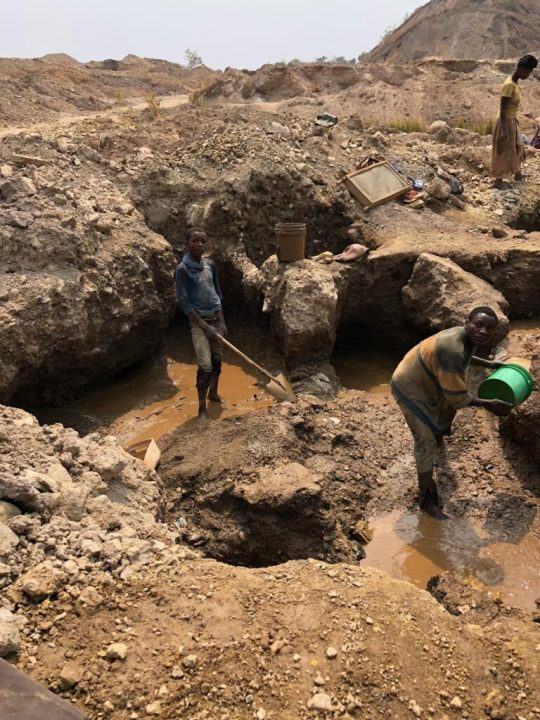


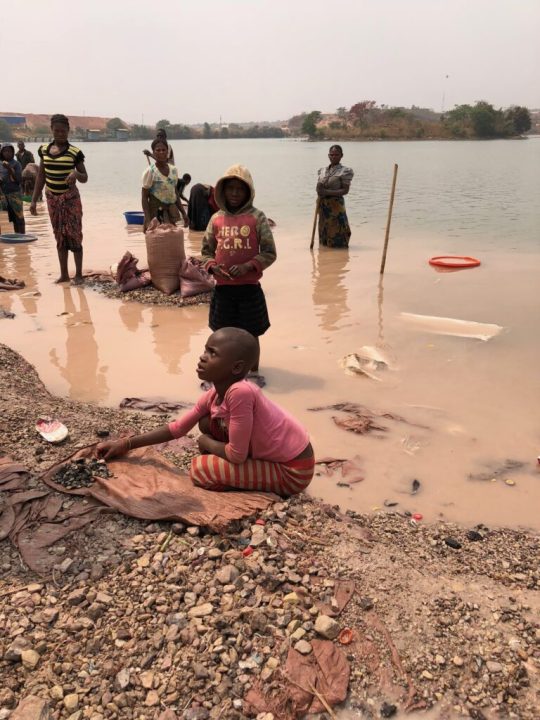
—Can you explain the role China plays in all of this? You say that it controls the supply chain.
—Yes. China controls about 70% of mining production in the Congo. Why do we accept China saying its mines are decent, if they don't even protect the human rights of their own people? Why do we accept a technology company or a car manufacturer saying, "My Chinese partners say they protect human rights there, and that's enough for me"? Why do we accept it?
—Why do you say that a certain transition to green energy is absolute hypocrisy?
—When the calls in favor of this transition consist of proposing to consumers that they buy electric vehicles instead of gasoline cars, this is hypocrisy. Because the cobalt and other elements that are used for the batteries of these cars are extracted using methods that are catastrophic for the environment. While in one part of the world we say we want to save the environment and leave a greener planet to our children, in another we are destroying both the planet and the future of their children. How can you save only part of the planet, turning the rest into a toxic dump? How can we give a green planet only to our children, while we let other people's children die? This is hypocritical.
—It is a reflection of the domination that the global north maintains over the south.
—We have never given Congo the opportunity to benefit from its own resources. It is a colonial mentality: time has passed, but the colonial mentality has not. It is the same type of colonial plunder from a century and a half ago. It is colonial to say: "Look, we need this, they have it, we take it from them in any way and, when we no longer need it, we leave a catastrophe behind us". There are companies that, recently, have started to pretend that they are becoming aware of this and promised that they would try to use batteries that did not have cobalt, but in reality they said: "Well, we've been caught, we'll look for another mechanism". And they do nothing to solve the catastrophe. Even if we no longer needed cobalt tomorrow, we would have to repair the destruction we have caused these past fifteen years.
—It's the big companies who should be required to react, but what do you think a Western consumer who has gotten upset reading you could do?
—The first step to progress in the conquest of human rights is always to make injustice known. Contribute to make everyone knows. Most people are good and, in their hearts, want no part of injustice. It is the few who move based on avarice and greed who pollute the rest of humanity. Outreach and awareness is the first step because it will inevitably activate a lot of people. Change always starts like this. In the case of cobalt, the second step is to think about our consumption habits. Every twelve months, the technology company I bought my phone from offers me a new one. Do I really need it? Every time we buy a new mobile phone, we put our foot on the neck of a child in the Congo. Better think twice, then.
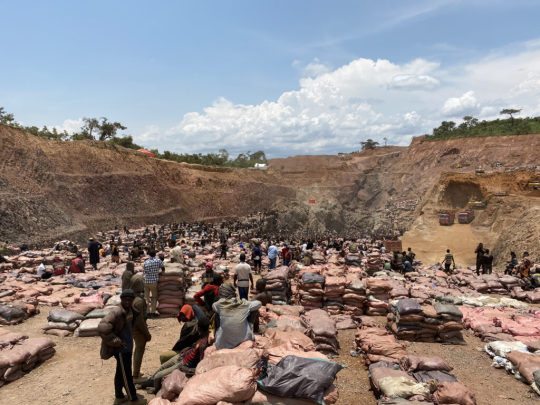
#congo#human rights#electric vehicles#electric cars#colonialism#labour rights#china#environmentalism#rape culture#feminism#slavery#africa#cobalt#labor rights#anti racism#free congo#siddharth kara#childrens rights#history#💬
184 notes
·
View notes